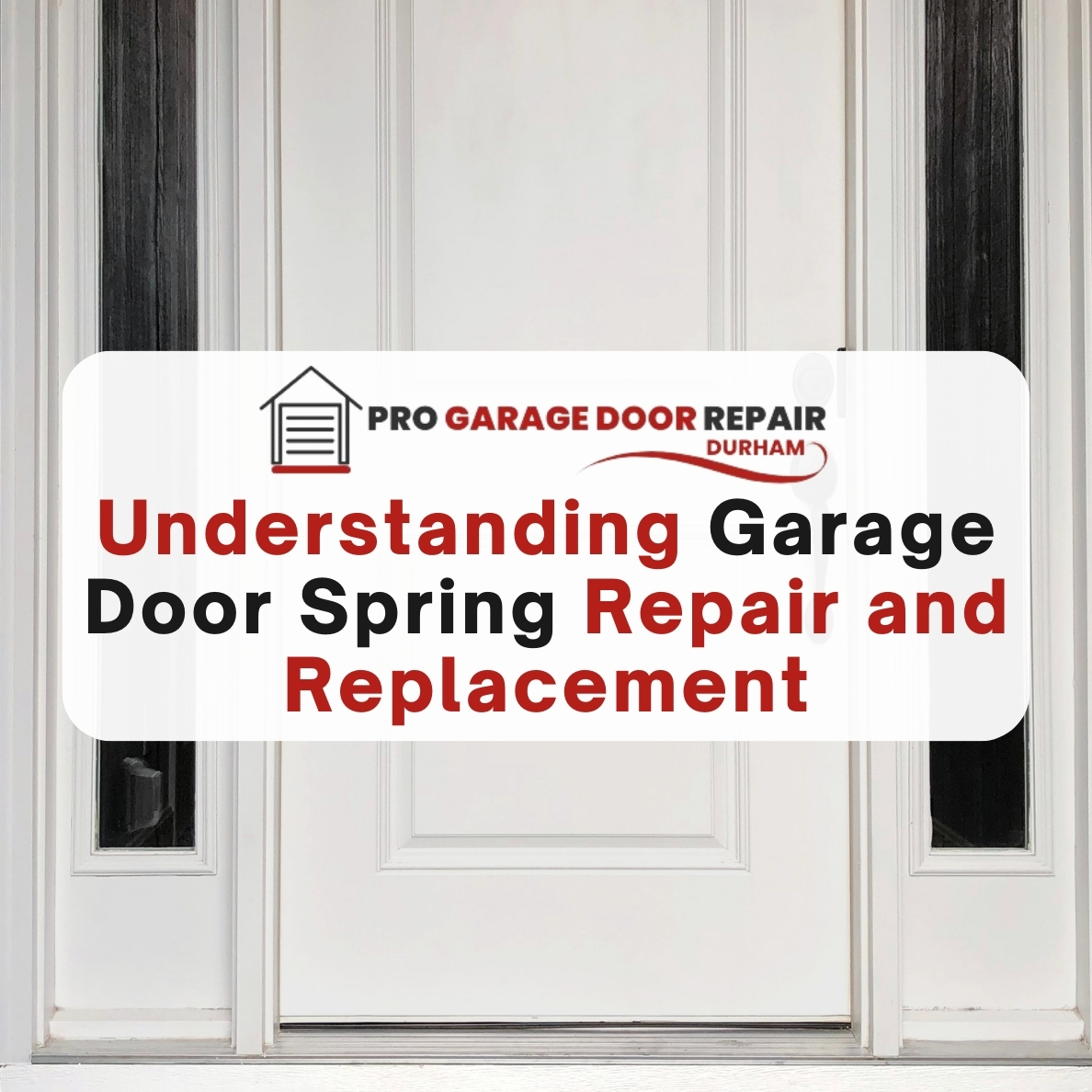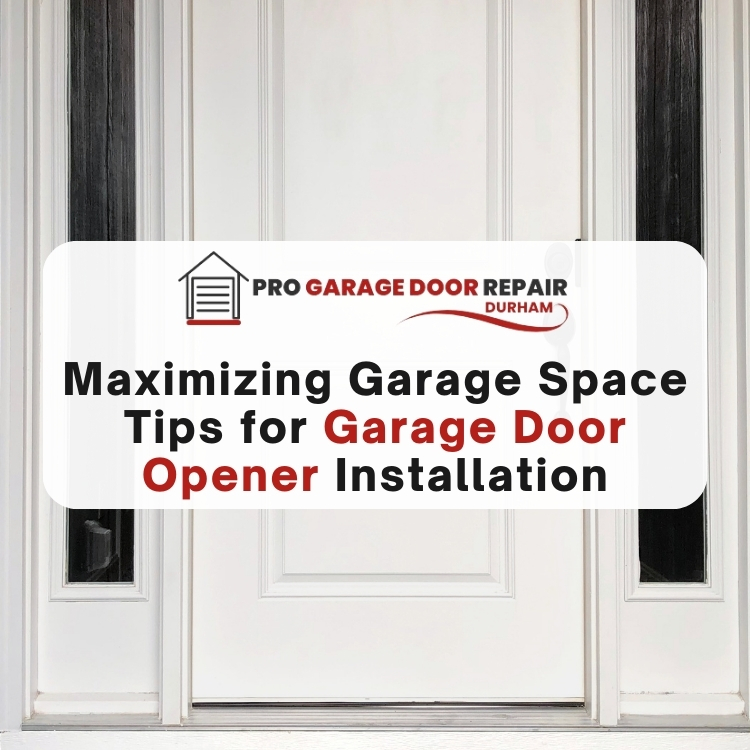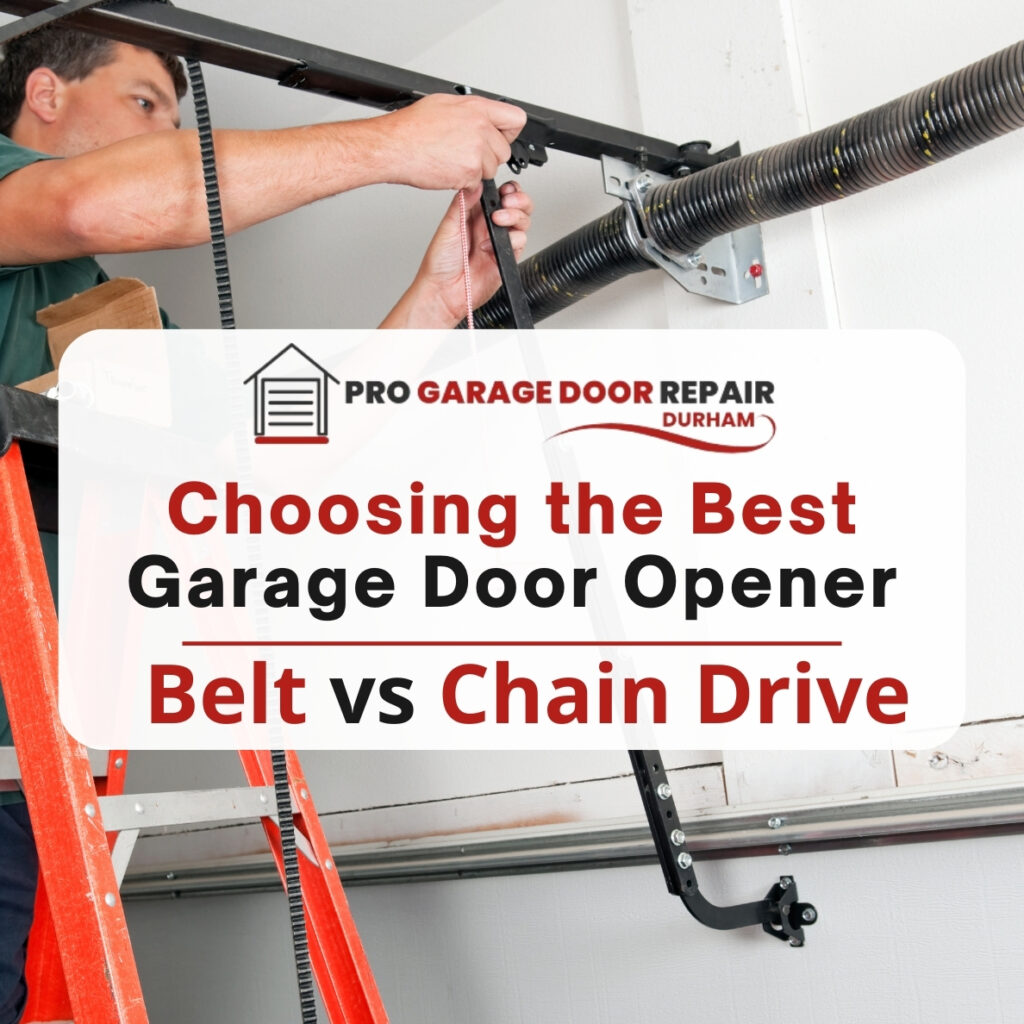Opening your garage door to find it sagging unevenly or making loud noises can be a frustrating and concerning situation for any homeowner. Upon closer inspection, you may realize the culprit is failing garage door springs needing repair or full replacement. Understanding the signs, causes, spring types, and proper repair/replacement process is key for addressing this issue promptly before further damage occurs.
Signs You Need Garage Door Spring Repair or Replacement
There are several clear indicators that the torsion or extension springs on your garage door system need professional service:
- Visible Sagging/Uneven Door Movement: If your automated garage door is sagging on one side or not moving evenly, stretched or broken springs could be the reason. They support the door’s weight and allow smooth opening/closing.
- Difficult to Open or Close: Having to forcefully pull or push your garage door open/closed likely means weakening springs. Properly functioning torsion and extension springs should allow easy door movement.
- Loud Noises from Door System: Grinding, squeaking, or loud banging noises point to worn components like springs that need repair or replacing. The springs should operate quietly.
- Visible Damage: You may actually see broken coils, stretched length, or detached hardware. Visible deterioration means new springs are definitely needed.

What Causes Garage Door Springs to Fail?
The heavy repetitive strain on these coiled metal parts leads to natural failure over time. However, more abrupt breakage can also occur due to:
- Metal Fatigue: Door openings/closings create ongoing wear until coils crack and break after years of use.
- Accidental Damage: Quick forceful closings or openings can overextend springs. Garage items like bikes hitting the door can also lead to dents or early spring failure.
- Manufacturing Defects: In some cases, faulty design or production leads springs to break sooner rather than later even with normal usage.
Replacing damaged, defective, or naturally fatigued springs helps ensure smooth and safe garage door function for years before needing service again.
Garage Door Spring Types
The two spring designs that counterbalance almost all residential garage doors are:
Extension Springs
- Location: Fastened along the horizontal tracks above the upper corners of the garage door
- Function: Lift door via stretching and contracting to assist opening/closing
- Considerations: Require safety containment cables. Break more easily under strain than torsion springs. Usually replaced rather than repaired.
Torsion Springs
- Location: Mounted horizontally above the garage door on a metal shaft running along the door header
- Function: Wind and unwind around the shaft assisting door movement
- Types: Single long winding spring or two shorter springs attached at either end of the shaft
- Considerations: Regarded as safer. Both repair and replacement are common.
Garage Door Spring Repair vs. Replacement
Repair is an option depending on spring type and extent of damage. It may involve replacing broken coils, re-aligning loosened hardware, or adding reinforcement brackets at extra cost.
Full replacement is more frequently required and advised to improve safety. Replacing old weakened springs with new high tension Commercial or EZ-Set Torsion Springs can provide long-lasting performance and safety.
While replacing only broken garage door springs may seem cheaper upfront, repaired old springs are more prone to breaking again soon. Replacing them preemptively ensures fewer return trips and continued reliability.

Step-by-Step Garage Door Spring Replacement Process
Replacing torsion or extension springs has risks of injuries and door system damage if not performed properly. The general process professional technicians use includes:
- Preparing the Work Area: Sweep floor, provide lighting, use cones/barricades to prevent entry under operating door.
- Locking and Blocking the Door: Manually close and use locks or clamps to secure door and prevent movement during spring replacement process. Use wood blocks or other rigid objects to further stabilize door.
- Removing Old Springs: Detach and take off old springs plus parts like cables, bolts, winding rods.
- Installing New Replacement Springs: Follow manufacturer instructions for proper configuration and winding of new springs.
- Testing and Adjustment: Unlock door, test open/close function plus spring weighting, adjust components if needed until smooth operation is restored.
- Final Safety Inspection: All door and spring components should now be restored to proper working order and confirmed safe.
Having an experienced technician handle this intricate process reduces injury risks and ensures your newly replaced garage door springs provide maximum lifting power and longevity.
Why Safety Cautions Matter During Spring Replacement
The extreme tension and released energy from winding/unwinding garage door springs can cause serious harm if not handled correctly. Proper precautions are vital and include:
- Wearing protective gloves, goggles, sturdy shoes, hardhat when working nearby
- Keeping hands/fingers away from winding shafts and coil ends
- Choosing correct spring diameter and windings to bear door weight
- Anchoring winding rod properly before turning
- Maintaining control when releasing spring tension
Without training and the right tools, injury risks multiply, which is why most homeowners depend on professional garage door service technicians for this work.
How much does it cost to replace garage door springs?
For professional installation, average costs range from $200 – $350. High tension or custom-length springs can be higher.
How long do garage door springs last?
The average lifespan is 5-7 years with higher cycle usage reducing longevity. Commercial springs last over 10,000 cycles. Talk to your garage door company about cycle ratings.
Can I replace garage door springs myself?
It’s extremely challenging and risky to DIY torsion and extension spring replacement due to the dangerous tension levels and specialized tools/knowledge required. Garage door technician services are strongly advised.
What are signs I may need new garage door springs?
Any visible damage like cracked coils, detached hardware, or uneven hanging lengths means replacement time. Increased difficulty opening/closing and loud noises from the springs are other prime symptoms repairs can’t remedy long-term in aging door systems.
Conclusion
Noticing signs of failing garage door springs early and acting quickly to replace them prevents more extensive repairs often caused by delaying service. Once new Commercial or EZ-Set extension/torsion springs are properly installed, garage access can be restored to safe, smooth, and hands-free daily functionality once again. Monitoring noise and tracking yearly spring usage/door cycles will help determine the eventual necessity of another vital spring replacement




